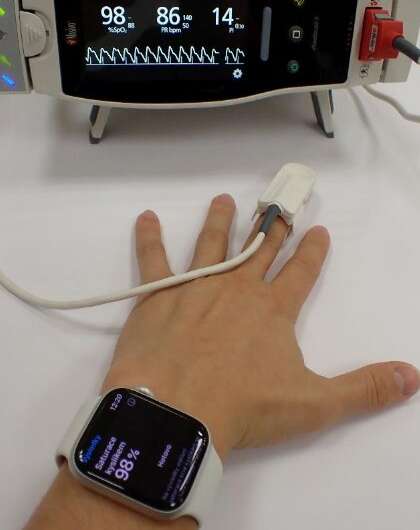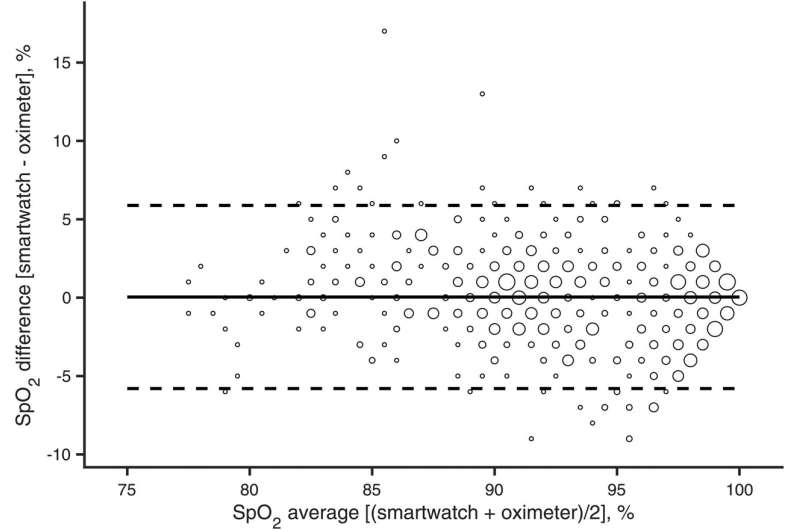Commercial smartwatch provides reliable blood oxygen saturation values as compared to a medical-grade pulse oximeter

Recently, consumer wearables have created the vision of new possibilities for personal care. Routine monitoring of biological signals such as heart rate or sleep pattern using wearable devices is an emerging trend in health monitoring outside the clinic with a multi-billion dollar potential.
The COVID-19 pandemic and its aftermath will only emphasize this trend. Currently, the role of smartwatches in health care is investigated and discussed. Earlier feasibility studies focused on activity monitoring and chronic disease self-management. However, a previous study warned that a smartwatch did not have sufficient accuracy in measuring blood pressure or pulse oximetry compared to clinical standards.
A recent study published by researchers from the Faculty of Biomedical Engineering, Czech Technical University in Prague aims to compare the measurement of peripheral blood oxygen saturation using a very popular smartwatch to a medical-grade pulse oximeter.
Pulse oximetry as a method of indirect measurement of peripheral blood oxygen saturation is a relatively new metric in smartwatches, but it is becoming routinely available in new models, allowing convenient blood oxygen saturation monitoring at home or, with some restrictions due to movement, outdoors without the need for a dedicated pulse oximeter.

The main finding of the study is that blood oxygen saturation measurement by Apple Watch Series 6, a consumer product, did not differ on average from blood oxygen saturation measurement by the Masimo Radical-7 pulse oximeter, a medical device. Results of the study suggest that smartwatch technology for measuring blood oxygen saturation has matured enough to be considered part of patient care.
This can help detect hidden, but potentially serious problems such as sleep apnea, which is a growing problem with possible cognitive impacts, or in the early detection of acute exacerbations of chronic conditions such as Chronic obstructive pulmonary disease.
"Apple Watch Series 6, as a representative of wearables, provides reliable blood oxygen saturation values as compared to a medical-grade pulse oximeter," says Martin Rozanek, Ph.D., associated professor and head of the Department of Biomedical Technology at Czech Technical University in Prague.
The research was published in DIGITAL HEALTH.
More information: Jakub Rafl et al, Commercial smartwatch with pulse oximeter detects short-time hypoxemia as well as standard medical-grade device: Validation study, DIGITAL HEALTH (2022). DOI: 10.1177/20552076221132127




















